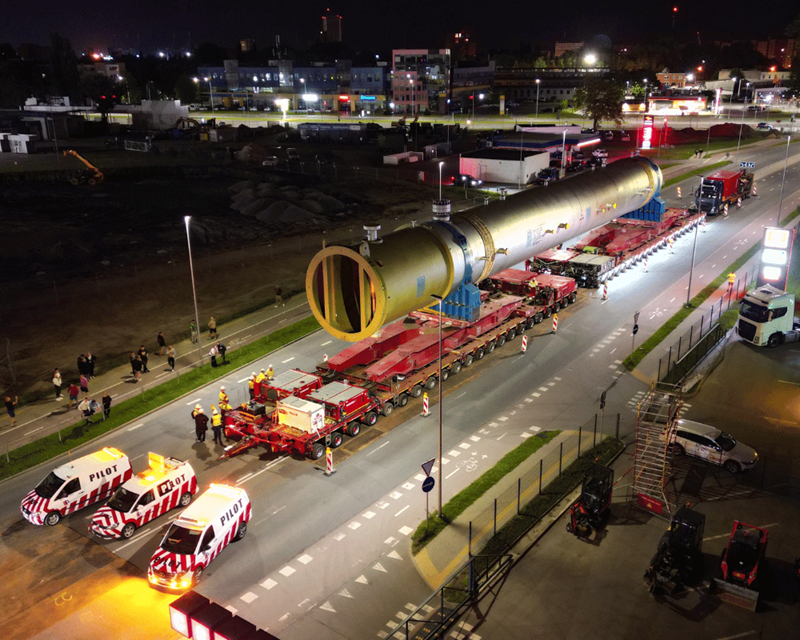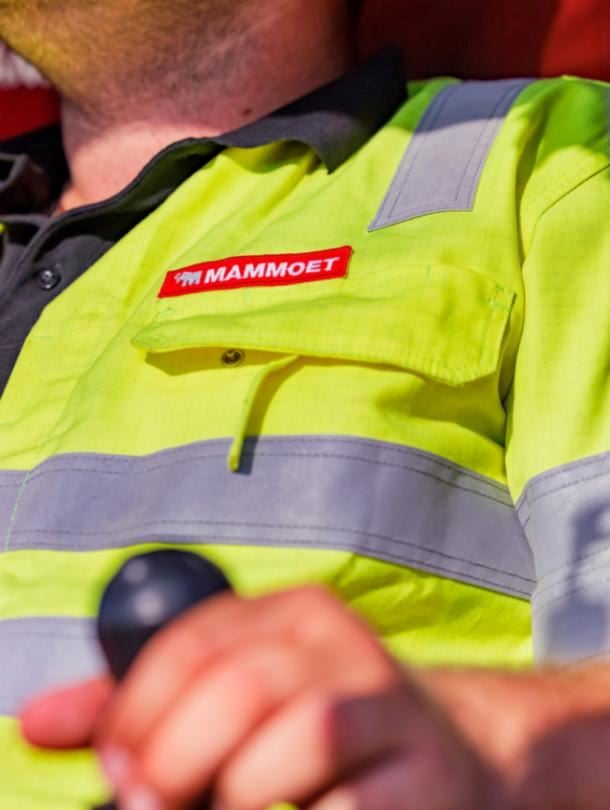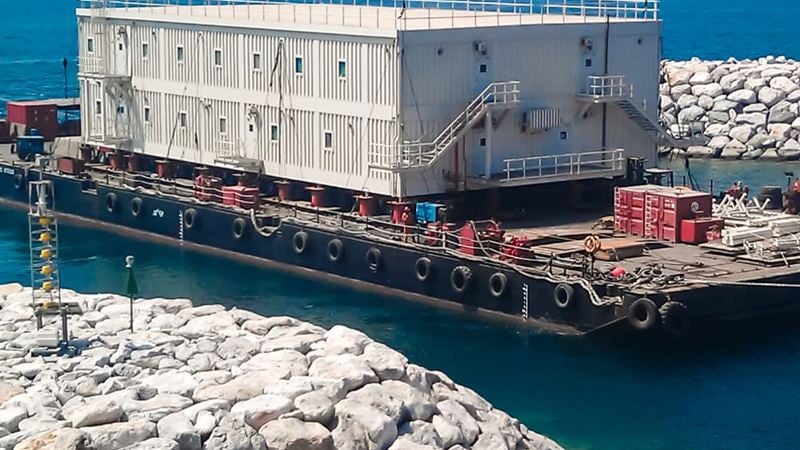
Sector:
Oil and Gas
Expertise:
Heavy transport
Heavy lifting
Gantry lifting
Benefits:
Protected infrastructure
Record breaker
Simplified management
Location:
Lithuania
The ORLEN Lietuva refinery in Mažeikiai, situated in the northwest of Lithuania, is the only refinery in the Baltic states.
Significant to the Baltic economy and its energy independence, a program was launched by ORLEN in 2000 to modernize the facilities’ refining efficiency and achieve future EU fuel quality requirements.
Part of this upgrade included a greenfield project to install a Residue Hydrocracking Unit (RHCU) to support greener fuel projects and increase site capacity.
With the unit weighing 1,500 tonnes, and measuring over 50 meters tall, ORLEN Lietuva approached engineers at Mammoet to support its transportation and installation.
Mammoet has a longstanding relationship with ORLEN Lietuva and worked together in 2008 on a similar project: delivering heavy components to the same refinery.
With Mammoet familiar with the Mažeikiai site, and the steps needed to deliver a project of this scale safely and efficiently, it was entrusted again by ORLEN Lietuva to be its engineering and logistics partner.
Years of planning
Planning started in 2016. Working with ORLEN Lietuva and the Lithuanian Transport Authority, Mammoet engineers investigated different methods, technologies and solutions to get the unit into Lithuania and to the facility

“We looked at all kinds of different options,” recalls Global Sales Director, Edvinas Ivanauskas. “We considered bringing it by water and by a neighboring country. We also considered building a temporary jetty close to the refinery; however, this was not feasible due to the environmental impact assessment. When selecting the best route, you must carry out a lot of investigation in terms of the ground, the bridges and the weather conditions.”
Cutting the RHCU and transporting it in parts was also investigated. However, this would require welding it back together at the site using a specialist welding machine, of which there are only two in Europe. The team therefore took the decision to transport it in one piece.
Constructed in Italy, the unit was shipped to the city of Klaipeda on a heavy lift Jumbo vessel equipped with two 900t cranes to lift it into its port. Preparations had to be made to get the correct load introductions and ensure that the port could receive such a heavy vessel and cargo.
“A port is usually six or seven tonnes per square meter for standard operation,” explains Ivanauskas. “Basically, we took the approach to strengthen the quay and the areas around it to be able to handle the vessel. We sought special permission from the terminal owner and port authority to get approval.’
Slow but steady
Transportation of the unit by road began. The route was 145km (1.5 times the Lithuanian coastline). The reactor was transported using 88 axle lines of PST and conventional trailer, pulled by two prime movers.

The journey took around 17 days, with the convoy travelling at an average speed of three to five km/h with movements mostly at night. This was to avoid damaging the asphalt in the summer heat and to minimize disruption for traffic and the public.
Despite this, the route still posed its challenges. Summer in Lithuania can bring heavy rainfall and, in the weeks leading up to the transportation, there was a downpour. To prevent the heavy convoy from getting stuck in the ground, steel plates were laid across the gravel routes to spread the loads.
Electric cables also needed to be temporarily disconnected, and a permanent bridge constructed for the convoy to use. Five existing bridges also needed to be reinforced, as well as culverts bridged, and several bypasses erected.
At one stage, the team had to overcome an 8% slope in a small valley. With the ground unstable, sheet piling was used, and two additional prime movers called in, to support the convoy.
Transporting the mammoth RHCU gained much media attention and as such, drew quite a crowd of onlookers. People would arrive as early as 4am to see the convoy, and around 500 people flocked to witness it perform one turn and capture the moment on their phone cameras.
Record-breaking project
By comparison, installation of the unit was more straightforward. This was carried out using a gantry crane and LR11350 (1,300t) tailing crane.
The cranes first performed a tandem lift of the unit, so that operators could drive the trailers out from underneath it. The gantry crane then lifted the top of it, whilst the LR11350 followed its movements to keep the hook of the gantry straight.

The operation was completed in roughly seven hours, and to schedule, meaning work elsewhere on the site could continue promptly. This was due to Mammoet’s plug-and-play solution, which meant fewer transits and the unit not requiring any specialist equipment, or time, for assembly when it arrived at the site.
The RHCU also made the record books for being the heaviest load ever transported in Lithuania. It was also the first time that a gantry crane had ever been used to perform a lift in the country.
“The team did a fantastic job delivering a challenging project safely and efficiently, while managing the huge interest from the press and government agencies, which put extra attention and pressure on the project”, says Ivanauskas.
“Our customer has been highly appreciative of what we’ve done and how we delivered the project. I’d like to give a personal thank you to everyone who has contributed to it. It was a great job and an important one for Lithuania.”




